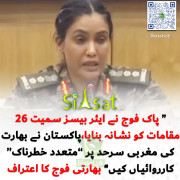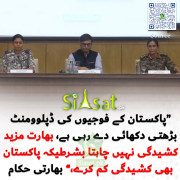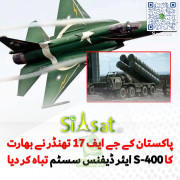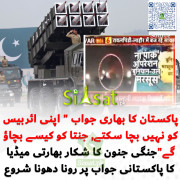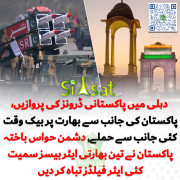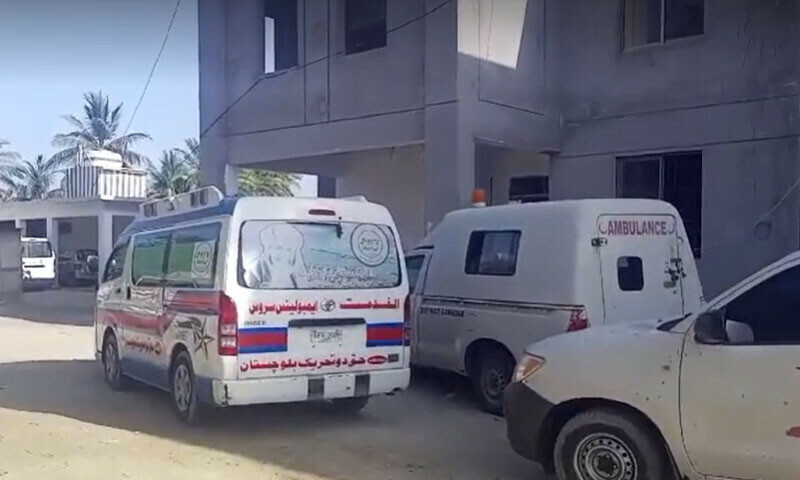Arslan
Moderator

The Pakistan Tehreek-e-Insaf (PTI) has announced its economic vision recently. The document identifies the socio-economic challenges facing the country and reveals the PTIs strategy to address these in a span of five years.
It has not been the tradition of our major political parties to present their economic vision before the general election owing to the lack of capacity and understanding. Prior to the unveiling of the PTIs economic vision, Humayun Akhtar Khan, representing the views of his faction of the Pakistan Muslim League, did publicise the Road Map to Pakistans Recovery in October 2011. The PTIs economic vision is, therefore a welcome addition and must be appreciated.
A thorough reading of the document reveals that the economic team of the PTI, by and large, has done a reasonably good job in identifying the major economic challenges facing the country. These issues are not new, as they have been discussed regularly in my columns as well as in commentaries by others, over the last four years. It is gratifying to see the PTI taking note of these issues to a large extent in its economic vision.
Where the PTI document is weak and needs more work is to how to address the challenges identified in its vision. In most cases, it simply represents the good intension of the PTI in a very general form. Yet, in some cases the imprint of Shaukat Tarins nine-point agenda also finds place in the PTIs economic vision.
The following economic challenges have been rightly identified by the PTI. These consist of low tax-to-GDP ratio, large budget deficit and unsustainable debt burden on the fiscal side, economic growth slowing to an average of 3 percent per annum over the last five years owing to the collapse of both domestic and foreign investment. Indeed, with per capita income rising at an annual average rate of 1.0 percent, doubling of it would require 70 years, as opposed to just 12 years as in the case of India.
Crippling energy crisis emerging as a major headwind to growth and prosperity, depreciating exchange rate fuelling inflation along with massive borrowing from the banking system to finance budget deficit, depleting foreign exchange reserves causing uncertainty towards external balance of payment are some of the key economic issues rightly identified by the PTI.
High infant mortality and low literacy rate, even lower than that of Zimbabwe, Rwanda, Nigeria and Liberia are real social challenges that have found a place in the document. Governance issues like crumbling state institutions, corruption and lack of accountability and constituency politics breeding corruption are also well represented in the document.
The PTI has pointed out that Pakistan cannot afford another five years of the status quo. God forbid if that happens it will have disastrous consequences for the economy. It is against this background that the PTI has come up with its reform agenda which circles around its five-point emergency plan, namely the energy sector reform, institutional reform, expenditure reform, revenue collection reform and human capital development. It is this part of the PTIs economic vision which lacks clarity and operational strategy.
Furthermore, some thoughts should have been given to issues arising out of the new NFC Award, and some credible strategy to deal with crumbling infrastructure and private sector development should have been explicated.
Let me propose some refinements to the existing five-point emergency plan. Instead of five-points, the PTI may consider a six-point emergency plan which may include energy sector reforms, fiscal reforms, infrastructure developments, private sector developments, human capital developments and governance reforms. Fiscal reforms should include reforms in revenue and expenditure along with rethinking of issues in provincial fiscal efforts and the NFC Award. Without addressing the NFC Award related issues, there can never be a meaningful fiscal policy and macroeconomic stability in the country.
The private sector has lost confidence over the governments economic management. Deteriorating security environment has forced them to relocate their industries abroad. The private sector will need confidence building measures for which the PTI must have a strategy in place.
Strong physical infrastructure is a critical pre-requisite for higher economic growth and poverty alleviation. Pakistans infrastructure has weakened over the last five years due to limited investment by the government. The PTI team needs a clear road map to strengthen physical infrastructure.
With reference to human capital development, the PTI lacks clarity. The strategy to deal with education and health is very general, very ambitious and consists of fairly micro level initiatives. It should be clear that there are no ministries and ministers of education and health in Pakistan after the 18th Amendment. These are purely provincial subjects. How can the PTI improve education and health when there are no ministries at the federal level? Who will take the initiative and who will enhance education and health budgets?
It is my humble submission that the PTI should consider establishing a well-functioning education and health ministry at the federal level for effective coordination with provincial governments. The PTI has totally ignored higher education in the country and the future of the HEC. Some clarity of thoughts is vital in this regard. On the whole, the discussion on education and health is weak, lacks clarity and some of the suggestions are too ambitious.
The PTI has rightly identified the challenges facing the country, but we must admit that the country does not have the capacity to address all the issues at one time. The PTI will need to prioritise the issues, so that these are addressed sequentially. Reducing budget deficit through resource mobilisation, expenditure rationalisation, privatisation and revisiting the NFC Award should be the topmost priority followed by addressing energy issues. The development of physical and human infrastructure and private sector development should follow suit.
In conclusion, the PTIs economic vision is a welcome development. However, more work is required to operationalise and prioritise the strategy.
http://www.thenews.com.pk/Todays-News-9-129939-PTIs-economic-vision

